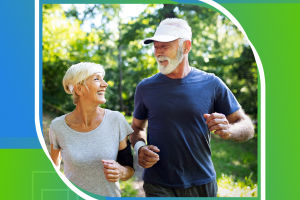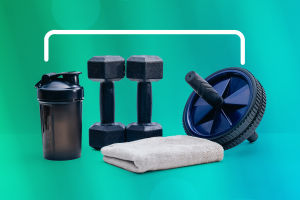It is well known that stretching is primarily designed to increase the flexibility of the body's muscles.
And flexibility is generally known as the range of motion of the joints and is an important component of human movement.
But what most people do not know is that flexibility and strength, endurance is one of the basic qualities that make up physical fitness.
Life is movement, and movement is to have a free movement of the limbs, the fitness of the movement is closely related to the body's form and posture.
In a sense, flexibility is at the top of the three basic physical qualities.
Benefits of Stretching
1. Improve the level of movement
Pre-exercise stretching reduces muscle viscosity and decreases the internal energy expenditure during exercise.
At the same time, increased elasticity has can improve the speed of muscle contraction and muscle contraction force.
2. Accelerated recovery
Stretching effectively relaxes muscles, reduces muscle stiffness, increases blood microcirculation, allows nutrients to reach tissues in need of repair and speeds up the elimination of metabolic waste.
3. Injury prevention
Stretching reduces the frequency, severity, and recovery time of muscle stretching.
Stretching makes muscles more elastic, absorbs more energy, and increases their ability to contract.
Stretching after sports training can speed up muscle recovery and reduce the next day's muscle training and work in a fatigued state to prevent injury
4. Maintain normal functional muscle length
When the chest muscles are shortened for a long time, it is important to maintain the normal functional length of the muscles not only because of the mechanical stretching of the rhomboid muscle with centrifugal tension.
But also because of the neurological inhibition that prevents the rhomboid muscle from exerting normal muscle force to maintain postural balance, which is the posture of our daily life.
5. Improve neuromuscular efficiency
There are proprioceptors in the muscles (muscle shuttle and tendon shuttle), which can sense the degree of muscle pull and the degree of muscle contraction and joint extension.
And the muscle shuttle and tendon shuttle are the basic part of the neural regulation of muscle activity, which reaches the motor neurons through the afferent nerves to achieve the reflex activity, so stretching can improve neuromuscular efficiency
6. Increase joint mobility Reduce joint stress
Most of the body's superficial muscles are across the joints, often interacting with each other at both ends of the joints, and stretching is good for increasing joint mobility and reducing the pressure between the joints
7. Correction of muscle imbalance
The muscles of the human body are generally distributed on both sides of the joint movement axis in a mutually antagonistic form.
Such as the frontal axis with flexors in front and extensors in the back (opposite below the knee), and when the muscles are unbalanced it leads to incorrect body posture and thus motor dysfunction.
The body needs to last about 3 minutes before it realizes that it no longer needs to supply more blood to the muscles.
A safe relaxation time is at least 3 minutes, and 4-5 minutes is certainly better.
All relaxation activities should include muscle nerve activity so as to avoid muscle soreness and tightness.
For example, when we want to jump up a step, bend the knee squat process will be thigh muscles quickly elongate, and then the muscle quickly springs back to contract the body to jump up.
If the knee is straight, relying only on muscle contraction to complete the action, it will become a comical zombie jump.
Stretching is not only the key to improving muscle movement but also the safety of the movement.
Muscles regularly in a state of contraction will make the local pressure increase, resulting in local inflammatory factors, metabolic waste discharged obstructed, and muscle fatigue.
In the long run, naturally easy to cause sports injuries.


